Uncategorized
now browsing by category
Meditative Art Making by Lisa Marie Ferry
Please enjoy this fabulous post from Region 9 representative, Lisa Marie Ferry
Meditative Art Making
With the hustle and bustle of the holiday season, EVERYONE is stressed out. And as we try to bring the kids in from the excitement of the season, art educators are naturally exhausted. What can we do to reduce this stress and have fun at the same time?
Meditation. Yeah, yeah, Lisa Marie, we know that meditation is great to reduce stress, but how in the world can we do this in the classroom? And what about me? I know you always say, “you need to take care of yourself so you can take care of the kids”. Well, hold on to your paint brushes to learn some techniques that are tried and true (and even some of your colleagues may join in).
So let’s get started with first thing first…
Music soothes the beast, so start with one of the great apps, like Insight Timer, or music on YouTube, like Nora En Pure. The kids say it reminds them of something that would be played in Holister (WIN!)
Stress Relief Meditation Painting:
- No painting skill required (it’s abstract, my fav)
- This technique takes you to a deeper creative process by focusing on the music, nothing else.
- It helps ground you and refocus
- Don’t forget to breathe, deeply
- This process is letting your intuition take the reigns and run with it. Close your eyes and listen to the music for a few minutes, while deep breathing in to the count of 5, then exhale to the count of 8.
Supplies:
- Canvas or canvas board
- Acrylic paint (pick your favorites)
- Pallet knife and paint brushes
- Sponges
- Paper towels (for clean up and to use crumbled up for texture)
- Bubble wrap (because it is fun to dip in paint)
Squirt the paint in small piles on your canvas. Then using the knife or brushes, start swirling around to cover all the white of the base. Try to keep it marble-like (not to over blend).
You can use a hair dryer to speed the drying process or to help move some paint around. Sometimes, you can mix up paint with added water and do some drips, spatter or sprays. Don’t forget about the sponges and bubble wrap for added texture or once it is dry, a contrasting color added on top.
Check in with how you are feeling; are you still doing deep breathing?. Do you feel like time is passing by and your feeling quite relaxed? Then, you are on the right track. If you are feeling bored or tense, change the way you are painting. Use cardboard to scrap the paint across, use more of the sponge to “dab” (yes, I said DAB-lol).
Patterns and Repetition
Meditative Happy Find Rocks:
Dots. Dots are fun and easy so why not make a beautiful piece of work. Plus, the repetitive process is very calming.
Supplies:
- Q-tips
- Toothpicks
- Pencils with new erasers
- Or anything you can make a smallish dot with, like your pinky tip
- Acrylic paint
- Paper, canvas, river rocks (yes, my fav because you will see below)
Mix up your classroom, before you start, offer hibiscus tea to the students, sit in a comfortable yoga position. Play a river soundtrack on YouTube or Insight Timer. While they are sipping their tea, discuss this next project. Talk about pattern, repetition, and color. Also, look at mandalas and have the students understand about circular repetition. Either pre-find the river rocks or any other smooth rock, or take the students on an exploration outside when the weather is nicer.
Start in the center of the rock and make your way around with circles of dots. The best part is that you can have the students trade the rocks like ATC or have the students hide the rocks around the school and grounds for someone to happily find it to make their day.
Don’t forget to all come back and reflect the project and how it made them feel. Of course, don’t forget to sip your tea in a comfortable yoga sitting position. See how it all comes back around?
The most important thing you have to remember with any meditative/stress reducing project is to BREATHE, Taking deep breaths throughout you day help to ground and refocus so you can clearly enter your next challenge that pops up with a clear head. When life seems too overwhelming, name 5 things you can see, 4 things you can touch, 3 things you can hear, 2 things you can smell, and 1 thing you can taste to help ground your thoughts and clear your head, so you, and your kids can be in the present moment and CREATE!
Experimentation & Discovery in Media Arts
Experimentation & Discovery in Media Arts
Robin Brewer
The art curriculum at Garnet Valley is inspired by the postmodern principles and principles of possibility as written by Olivia Gude (2004 and 2007). In her article, Principles of Possibility: Considerations for a 21st Century Art & Culture Curriculum, Gude says of her principle, Playing, “Students of all ages need opportunities to creatively “mess around” with various media…” The corresponding Garnet Valley principle, Experimentation & Discovery, states, “Artists immerse themselves in the process of experimentation and discover empowered experiences to create their visual voice.” I approach my media arts lessons from this angle and as part of a choice-based classroom.
What are Media Arts?
In 2014, the national arts standards were rewritten. At that time a fifth area, Media Arts, was added to the original four (Visual Arts, Music, Dance, and Theater). Media Arts encompass photography, film/video, audio, motion graphics, and interactive media. At Garnet Valley, some media arts courses are in the Technology Education department, and some are in our Art department. I teach Photography (analog and digital), Filmmaking, and Animation. Another teacher in our department teaches a course called Digital Media & Graphic Design utilizing mainly Photoshop and Illustrator.
At a time when students spend so much time already with technology, how do I get them to look at their devices and other technology in a fresh way? Students naturally “play” on their phones with filters and apps. Instagram filters are easy because the work is done for them. This type of playing only scratches the surface. In my photography class, we use the cameras on their cell phones for intro lessons on composition, but I find they are more “playful” when something completely new is introduced. An early unit in my introductory level photography class is pinhole cameras. Through experimentation, students gain a better understanding of the workings of a camera. They make adjustments to pinhole size (aperture) and exposure time (shutter speed) and they troubleshoot light leaks. Throughout their experimentations, students discover a new way to create an image. It is completely unlike their phone camera and Instagram. And it is not instant. Student take multiple failed or partially failed images before they get “the one”.
Another unit in my photography class entails building a portfolio of experimental darkroom images. They try each of the processes (hand-color fiber images, photograms, double exposures, layered negatives, layered textures, and long-exposures). They are encouraged to break rules and experiment even further. At the end of the unit, they reflect on all the different experimentation they did, then choose one process to explore further. This final piece is their culminating artwork and the early experimentations are their “research” gained through play. I use this experimental portfolio and final choice work as the growth requirement on my SLO.
I take a similar approach with my film class. We spend the first two weeks of the semester making short videos as they play with different cameras, mics, lights, tripods, animation programs, and editing software. Once comfortable with the equipment and materials available to them, they propose two films that they want to make using their choice of content, genre and film type (live action, stop-motion, computer animation).
I have not always taught this way, but after forming units around postmodern principles like Experimentation & Discovery, I’ve found that students are more invested in their learning when they are given the freedom to try the materials and equipment without judgement before beginning more critical works.
I would encourage everyone to look for a lesson where the end result seems a bit stiff and consider what you can do before that lesson to give students more time to play with the materials on their own terms.
Conference Key Note Sneak Peek
Have you signed up for the PAEA conference in Harrisburg yet?? It’s coming up!! 3 weeks away…October 5-7! I personally can’t wait!
Do you know about one of the Key Note speakers, Wynne Kinder?? Read below to find out more!!
WYNNE KINDER, M. Ed. Wynne’s teaching career spans 28 years in private and public schools, most recently including 13 years bringing mindfulness into regular, special (autistic & emotional support) and alternative education (including incarceration) settings. As owner of Kinder Associates LLC and trainer for Wellness Works in Schools™ (preK-12 classrooms & teacher training), she creates curriculum, programming, online trainings and teaching tools that address: mindful awareness, diverse learning needs, trauma in the classroom, healthy connection, social emotional skills, engagement & participation, and behavior guidance. Her work is informed by training with: the Mindfulness-based Mind Fitness Institute, the Trauma Center – Justice Resource Institute and UMass Mindfulness-based Stress Reduction. Wynne is the author and content creator of: Peace Work – mindful lessons for the early years,Mindful Moods – a mindful, SEL curriculum for grades 3-5, Mindful Choices – a mindful, SEL curriculum for grades 6-8, a chapter on special education in Teaching Mindfulness Skills to Kids and Teens (2015), GoNoodle.com’s digital brain breaks (mindful SEL themes in FLOW, Think About It, Maximo, BLAZER Fresh) & Audio practices for MindfullyADD.com. She has practiced mindfulness for more than 15 years and received training in Mindful Yoga, Mindfulness-Based Stress Reduction, Trauma Sensitive Approaches through the Justice Resource Institute (MA), Boys Town – Teaching Social Skills to Youth; CASEL, Mindfulness-based Mind Fitness Institute (VA), Yoga Ed teacher training, and Social Action Teacher Training – Lineage Project (NYC). Wynne holds a PA Teaching Certificate (K-6) and earned a bachelor’s degree in elementary education from Alma College (MI). www.wynnekinder.com
Therapeutic Approaches for Art Education: A Creative Arts Playbook (Conference Sneak Peek!)
The absolutely amazing Lisa Kay will be presenting at the PAEA Conference in October. You will not want to miss her session on Friday October 5, 2-2:50 pm in Harrisburg!! Be there y’all!!
Learn practical guidelines for therapeutic art making in art education. Understand approaches for students who have experienced adversity in their lives. Discover ways art helps students’ express emotions and self-regulate.
Follow the link below for more artwork and inspiration!
Design Thinking and Imaginative Play- Establishing Big Buy in for Little People (Conference Sneak Peek)
Another excellent conference sneak peek for the fast approaching PAEA Conference:
Mindfulness and Regaining Your Personal Artmaking Practices (Conference Sneak Peek!)
At this years PAEA Conference , be sure to to check out this session from Lisbeth Bucci!!
When: Saturday, October 6, 4:00 – 4:50 PM
Spend some quiet time of self–awareness and insight to create a plan to regain your personal artmaking practices. I will share my personal journey of how I made it happen over time.
PAEA headed to Alaska in 2019!!!
Want to go to Alaska?? I do! I do!!
Well PAEA is leading a group of art educators to Alaska the summer of 2019!! Yay!!
Learn more about the trip at the PAEA Conference in Harrisburg the first weekend of October!
Session Info:
Saturday, October 6, 10:00 – 10:50 AM
PAEA is Traveling to Alaska in 2019! Metropolitan A
Come and hear how we traveled to Cuba in 2017 and plan to head north to Alaska in August 2019. Dates, itinerary, professional development opportunities and costs will be presented.
Lisbeth Bucci and Robin Brewer
Tips for Globalizing the Art Classroom
Teaching K-8 art in Philadelphia for the past ten years has been quite the ride. With all of the cultures, races, religions, and languages represented in my classroom daily, I knew that I needed to do more to provide a more inclusive and informative environment and curriculum. Where do you begin? I started with translating English words into Spanish and Mandarin on labels around the room, and I devoted marking periods for deep study on different countries. We culminated our lessons with a “stamp” in our passports to bid our countries farewell. It was exciting because I was learning too, and I wanted to learn more! So I looked for more opportunities – applying for travel fellowships and signing up for professional development that would help me grow to globalize my art classroom.
On July 27, 2018, I attended the Global Teaching Dialogue held at the US Department of State George Marshall Center in Washington, D.C. This annual professional development event held in D.C. every summer is designed to provide K-12 teachers an opportunity to learn from other education experts and US Department of State fellowship alumni about bringing the world into US classrooms.
The event began with a panel discussion of State Department alumni regarding their studies abroad and how they implemented their work into their classrooms upon their return to the United States. A brief breakout session followed where I attended a workshop providing tips for globalizing elementary classrooms, but the following tips can be adapted for all ages. I’ve combed through several of the suggestions to provide you with some real ideas to bring the world to your students!
Through books and literature:
- International Children’s Digital Library is online resource of children’s books from around the world, written in their original languages (and some available in other translations). The mission of the ICDL is to “support the world’s children in becoming effective members of the global community – who exhibit tolerance and respect for diverse cultures, languages and ideas.” Connect with your English language learners and teach about other cultures through these great books!
- Kitaab World advocates for representation of South Asian children’s literature in the mainstream. They work to spread awareness about South Asian culture, providing resources through “content, context, and community”. Extremely rich collection of books to purchase through the site, lesson plans, and other goodies.
Connect with your community:
- Connect with outside groups like universities, local cultural clubs, international students, parents, rotary clubs
- World Affairs Council of Philadelphia
- World Affairs Council of Pittsburgh
- World Affairs Council of Harrisburg
Connect and network through social media and websites:
- Connect on Twitter: try a chat and share what you’re doing in the classroom:
- #globaledchat
- #edchat
- #globalgoals
- Follow on Twitter:
- @AsiaSocietyEDU
- @NatGeoEducation
- @GlobalEdCon
- @TGC_IREX
- @IREXintl
- @iEARNUSA
- iEARN-USA (International Education and Resource Network) is a network to connect with other educators and students to collaborate and participate in global projects. There is a fee for membership, but if your district will not provide the funds, you should contact iEARN.
- Asia Society aims to educate all students for employability and citizenship in a global era. Online professional development and articles about teaching for global competence, as well other great resources.
Use technology:
- Flipgrid is a video discussion platform which can also be used to connect with other educators and students around the world. Use it for critiques, reflections, and discussions!
- Empatico is a free tool for teachers to connect their classroom with others around the world through live video and activities designed to foster meaningful connections among students. Available in English for classrooms with 7-11 year olds.
- Mystery Skype is a global guessing game that connects students with other classes around the world to learn about geography, culture, and the similarities and differences they have with others.
- Google Arts and Culture is an incredibly valuable tool with much to browse through. Virtual museum tours are a great way to visit museums around the world!
- ePals is a platform to connect with other classrooms for penpals and project collaborations.
Professional Development and Opportunities:
- Fulbright Teachers for Global Classrooms Program is a year-long professional development which teaches educators the skills to globalize their classrooms through an online course, global symposium held in Washington D.C., and a 2-3 week field experience abroad
- The Fulbright Distinguished Awards in Teaching Short-Term Program is for K-12 teachers to apply for grants to engage in collaborative projects for 2-6 weeks abroad. Participants work with schools, non-profit organizations, teacher training institutions, and other educational organizations.
- The German American Partnership Program (GAPP) Student Exchange is a school exchange program between America and Germany to learn more about our education systems and countries. Contact Stefanie Proessl (Stefanie.Proessl@goethe.de) for questions regarding getting yourself and a small group of students started!
These are just scratching the surface of what is available to teachers in order to globalize your classrooms. Are you already globalizing your class? Please share in the comments and add to this Google Sheet – PAEA Globalizing Your Art Classroom!
First Year Teacher Survival (Tips & Tricks)
Guest Blog by PAEA Region 10 Representative Benjamin Hoffman:
As you enter your first few years of teaching, there are several obstacles that you will
encounter. But know that everything you experience is okay, and more so, there is so much to
love within our profession. Let me start with introducing myself. My name is Benjamin
Hoffman and I am the High School Art Teacher at Kutztown Area High School. I am a master’s
student, an artist, a regional representative, a musician, a volunteer firefighter and somehow
still finding the time to plan a wedding. Though it seems overwhelming, it is not, and it is
because of the following 15 tips and tricks that have not only helped me grow as an educator,
but enhance the overall quality of my program.
In just a few short weeks, I will be entering my third full year in education. As the only High
School Art Teacher, I have been very fortunate to have the ability to completely transform the
Visual Arts program to my liking. Though our school may be small in numbers, I would argue
that our program is equally competing with introductory college-level courses. And this is not
because of who I am, or the students themselves, but the collective time and effort that was
put together to cultivate an incredible first year for me. With two years under my belt, I have
to say that the excitement to return to school is overwhelming. And even within that
excitement comes the fear of the unknown, but it is because of the following list that has
helped me be successful throughout these first few years.
Note, some of these concepts have been pulled from other resources along with input from
colleagues to compile what I believe is the crash course on what to expect when starting from
scratch. Furthermore, I invite you to add and adapt each to your liking to be successful within
your own setting. And always remember to have fun. Though it seems silly to say words like
playful and silly, know that we absolutely have one of, if not, the most rewarding and enjoyable
professions. Who else can say that they will have had such a profound impact on a student’s
life? Not many, and it is over and over again that we will continue to see our field grow. We
simply need to be willing to put in the time and effort to make it successful. If you should have
any questions, comments or concerns upon reading, please do not hesitate to contact me
directly. I am always happy to be a resource and equally so, I too am learning for a lifetime, and
greatly appreciate what I can learn from others every day. Enjoy!
1) TAP INTO STUDENTS INTERESTS
- Whether or not you are handed a curriculum, know that there are always creative
ways to hone a skill while still adapting to student’s interests. When I was first
teaching in Baltimore, Maryland, students were obsessed with street art. In an
effort to tap into their interests, we would use found materials and basic color
theory to construct spaces where tagging and street art was welcomed. This
opportunity to freely create within our classroom not only changed the space as a
whole, but infected the school with energy and excitement.
2) COLLABORATE WITH OTHERS
- Though it seems impossible your first year, be open-minded and attempt to reach
out to other teachers. And with that being said, it goes for both para-professionals
and students. Do not take anything personal. There will be days when others,
including yourself, want to be left alone. That feeling is okay. But when you are once
again ready, start to step out of your comfort zone and share common interests with
other teachers. You will be surprised where that will lead you. One example for me
included pairing up with my chemistry teacher to learn about oil paints and their
properties as color is separated from each base. What an incredible find this was for
not only be, but for our students collectively.
3) BE RESOURCEFUL
- Work with what you have. There is no sense in reinventing the wheel when you first
start teaching. Though you may be entering teaching having just come off a exciting
clinical experience, you are now being handed several more tasks than you were
before. Trust me, there was much more that your cooperating teacher was handling
behind the scenes while your only responsibility was to teach. It is almost always
that there will exist more work behind the scenes than there will on stage. But it is
knowing what you have available and how you can be resourceful to make the most
out of your first year.
4) DON’T MAKE YOURSELF AN ISLAND
- It seems rhetorical, but it is common to find yourself becoming overwhelmed and
caught within the never-ending cycle of grading. But even when you do in fact find
that you are becoming overwhelmed, continue to prevail and reach out to
colleagues to help re-spark that right side of the brain. Other opportunities include
hosting lunch in your room rather than be subject to the teacher’s lounge. It goes
without saying, we truly have some of the most inviting and creative spaces within
the entire school.
5) IT IS OKAY TO SAY NO
- So many new teachers, including myself are apprehensive to say no their first year,
but it is okay. Collectively, we are all human and need to understand our breaking
points. However, do politely decline requests or offer suggestions on how to do
something so that those individuals who reached out once before, will hopefully
continue to return, building a friendship that may one day extend beyond the
classroom.
6) IF YOU ARE DROWNING, YOU ARE DOING IT RIGHT
- Along with being a new teacher comes the misconception that you get no sleep. I
can honestly say that this was stride and true for some weeks, while other nights, I
would be asleep well before the sun even set. Having worked in several different
settings, I can honestly say that there will be moments when the bell rings for
transition and you are still prepping a material for that class. Again, that is okay. - There will be moments when you are teaching something for the first time having no
knowledge of what may occur. It is okay. A motto that I had in place my first year
was simple. As long as I was more than 30 minutes ahead of my students, I felt good.
But now going into my third consecutive year, I have a plan, a syllabus, a curriculum
and so much more. It comes with time, but the reward is overwhelmingly positive.
7) EXTRA RESPONSIBILITIES
- Similar to what was mentioned with taking on too much, be aware that you may be
expected to assist with extra responsibilities. However, whether it is as simple as
hallway or lunch duty, take advantage of the opportunity. My first year, I was
assigned a study hall. Though it was a relaxing end to my day, it was frustrating to
know that during that exact time slot, I could be offering an additional studio course.
A few emails later, I had negotiated with administration to offer an additional studio
that block for my second year, and in place, would host detention every other week.
Though that seems like an unfair trade-off, know that detention duty for me is both
afterschool in my room and paid. As I am sure you can assume, the increase in pay
is rewarding, but the relationships I have fostered with that population has helped
greatly in so many other avenues both in and out of the classroom. Remember, just
because you may not love your current duty, there are means to adjusting what is
expected of you.
8) CLASSROOM MANAGEMENT
- Every educator will share what they believe is the most effective way to arrange
their classroom and how to structure daily procedures. But at the end of the day,
you need to do what is right for you and your students. Additionally, you need to
remain consistent to avoid any discrepancies along the way. Below you will see the
acronym ARTIST. This is truly the only set of expectations that I go over with High
School students and it has proven to work exceptionally.- Always be on time and prepared.
- Respect everyone and everything in the art room.
- Take responsibility.
- I can.
- Stay focused and on task.
- Try your best.
9) HOARDING
- I say this undoubtedly, but be prepared to take on a lot of stuff. You will be
surprised by the emails you will receive from parents and teachers asking if you
would like bulk quantities of such random, but useful materials. Just recently, I was
asked if I wanted over 500 National Geographic Magazines, almost 1,000 baby food
jars and 10-foot sections of bamboo. Needless to say, I accepted it all, but only
because I know what kind of space I have available. Just because it says free, does
not mean that your students will benefit from those materials. A personal rule of thumb for myself is if I have yet to use a material over the course of two years, to discard. It is heart-breaking to get rid of what we believe are such wonderful raw materials, however, at some point, you do need to absorb what your student’s interests are and tender to their immediate specific needs.
10) PROFESSIONAL DEVELOPMENT
- Even after you complete an extensive education program, your district will continue
to stretch your limits through professional developments that may range from
presentations on differentiated instruction all the way up to inquiry-based learning.
It can become overwhelming. You will find that these professional development
opportunities may never directly apply to our discipline, but believe it or not, they
do. Something that I have challenged myself with again has been trying to adapt the
content from those presentations to materials that can be shared with other
disciplines. In is then through these encounters that I hope to disseminate how the
arts can be infused into each class through each of the various models and teaching
strategies shared. Every new opportunity opens up pathways for new uncharted
discoveries to be made.
11) FAILURE & FRUSTRATION
- As previously mentioned, it is okay to pull from what you already know to help get
you started. And even more importantly is taking risks. There will undoubtedly be
assignments that fail and have you frustrated. But again, it is okay. There are
techniques that I attempt in even my own artwork, and still to this day, make
mistakes, or simply the process did not turn out as expected. That is okay. As
glamorous as it sounds to have a model for each assignment ahead, I personally
believe that those days are behind us as students should be stretched to follow a
path that meets their own interests and ideas. The bigger the mistake, the more we
learn. Another point to make is allowing students to experiment on their own. This
inclusion of inquiry-based learning not only helps to foster a rapport with students,
but help those individuals discover something for themselves. In turn, those failures
then become the grounds for discussion, a time in which those students are the
voice of the class.
12) ASK FOR HELP
- Everyone needs help at some point or one another. I have been very fortunate
within my job experiences to have mentors and first-year advisors to help guide me
along. But in the case that you are not assigned a mentor, reach out to anyone and
everyone. A personal favorite is making amends with the janitorial staff and the
secretaries. As soon as you have helped to establish those relationships, no longer
will you struggle or ever run out of paper towels. And when specific questions arise
with artistic practices, get connected and join a social media platform that supports
specifically what you are after. Though I have not fully plunged into the world of
Instagram, I have however found several fantastic forums and Facebook pages that are exclusive to art teachers per discipline and grade level. And as always, PAEA and NAEA offer exclusive benefits to members that encourage participation and calls for proposals that can help you stay connected on a global scale.
13) BARGAIN AND PLEAD
- Never can you have too much. No matter the case you make, budgeting will always
become something you dread, however, with the appropriate language and
understanding that what you are doing is benefiting your program, the outcomes
are much more positive. Just recently, I have found that I have wanted to dabble
into several different types of clay bodies without having to purchase such large
quantities of each. After making a simple phone call and explaining my position as an
art teacher wanting to expand my palette, the manufacturer was gracious enough to
send just enough samples that my students would have access to new materials at
no cost. Donations can exist in several forms, but no matter the means to which it
was acquired, always send thank you’s and stay connected. You may never know
where that contact will get you down the road. For me specifically, my close
proximity to the university and previous employment with the gallery has helped me
to secure pedestals each year for our end of the year spring showcase.
14) ADVOCATE
- Along with budgeting and displaying artwork comes advocating. As a painter, my
passion is murals. Murals help to liven a space and transform the environment from
which the individual interacts. It was not until my second year that I took on the
challenge and started an Art Club. Every week, students could stay after school to
paint and collaboratively make decisions on the walls that they would be walking
through every day. This is one way in which you can promote the Arts, but
furthermore, attending school board meetings. Though they may not be the most
eccentric event on your most likely one free evening, it does help to strengthen your
presence in the district. One final part, that is not always accessible for some is
living amongst the district you teach. Growing up, I had always heard that teachers
would never live where they worked, however, several of our staff live in town, and I
have to say what a rewarding experience it is to interact with our students in public
daily. It truly does help to strengthen your program both in and out of the
classroom as well as the relationships we have with students.
15) ENJOY YOUR STUDENTS
- Every day will present new challenges, but it is because of those risks that we
stumble upon something that is so beautiful. Even on the days that I believe nothing
is going right and behaviors were disrupting a class, I remind myself that I have such
an incredible job unlike any other field. I get to inspire, I get to lead, I get to learn
and I get to love. My students mean the world to me and there is nothing more
rewarding than seeing your student’s walk across the stage and receive their
diploma. As many great scholars have shared, teaching is not a field that demands immediate gratification, but a profession that spans a lifetime. A lifetime that will
take many years before coming back to say thank you and acknowledge just how
impactful you were when they had you as a teacher.
I hope that you find much of these tips and tricks to be inspiring and infer questions that you
may had not once posed before. If you should have any further questions, comments or
concerns, please do not hesitate to contact me directly. I am more than happy to be a resource
for you by any means. I wish you nothing but the upmost success in your future endeavors. “Art
is not what you see, but what you make others see.” –Edgar Degas
Respectfully,
Benjamin E. Hoffman
Visual Arts Teacher
Kutztown Area High School
bhoffman@kasd.org
Pennsylvania Art Education Association
Region 10 Representative
paearegion10@gmail.com
http://www.paeablog.org/
https://www.facebook.com/PAEAregion10
Rule Breakers and Makers: Women Artists at Work
Guest Post by Tyler Adjunct Professor Carol Royer, promoting an amazing professional development opportunity in collaboration with the Philadelphia Museum of Art!
In the second report published by The Freelands Foundation, evidence showed women artists continue to be under-represented in the art world. Women’s voices have been integral to the institution of art, but despite their continued engagement, many have faced challenges in showing, selling, and gaining recognition for their work.
For the first time, Tyler School of Art and the Philadelphia 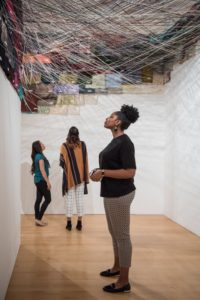 Museum of Art are collaborating to focus on the significant contributions of women in the visual arts. This unique summer course, “Women Artists at Work: Rule Breakers and Makers”, will utilize themes to explore art made by women and use this work as a jumping off point for the studio. Take inspiration from the work of modern and contemporary women artists in this week-long, pilot collaboration between the Philadelphia Museum of Art and Tyler School of Art. Students will engage directly with works by artists including Georgia O’Keefe, Jean Shin, and Ursula von Rydingsvard in the Art Museum galleries, as well as the Fabric Workshop and Museum.
Museum of Art are collaborating to focus on the significant contributions of women in the visual arts. This unique summer course, “Women Artists at Work: Rule Breakers and Makers”, will utilize themes to explore art made by women and use this work as a jumping off point for the studio. Take inspiration from the work of modern and contemporary women artists in this week-long, pilot collaboration between the Philadelphia Museum of Art and Tyler School of Art. Students will engage directly with works by artists including Georgia O’Keefe, Jean Shin, and Ursula von Rydingsvard in the Art Museum galleries, as well as the Fabric Workshop and Museum.
Structured looking, responding, and connecting led by Art Museum educators builds a foundation for intensive studio practice exploring a variety of materials and media. Three days of focused studio time at Tyler exploring a variety of materials and media will allow course participants to engage their interests and better understand their own voice as a maker.
GOALS
- Learn more about a select group of modern and contemporary women artists in the museum galleries
- Develop new work inspired by modern and contemporary women artists
- Consider our art making practice through a conceptual and theme based process
- Challenge our biases, question our assumptions, and expand our repertoire and understanding of what art can be
- Create new work in a focused studio setting alongside other artists
- Collaborate through learning and teaching in a small group
- Participate in art-making workshops
- Become reflective practitioners through direct experience, discussion, writing, and art-making










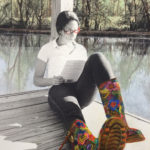


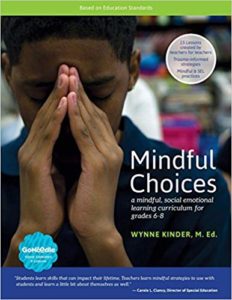
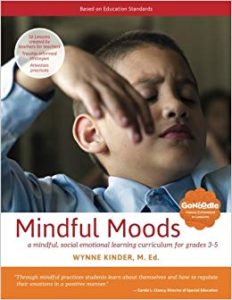

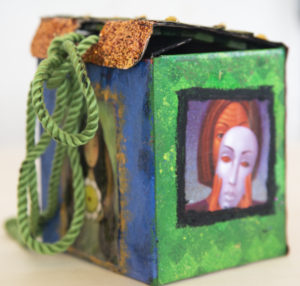

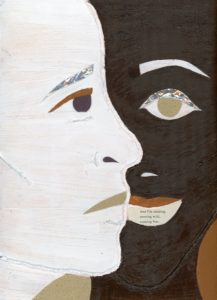
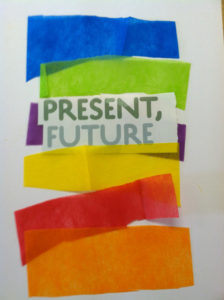
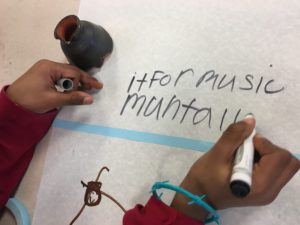




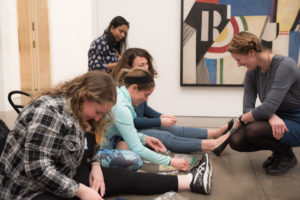
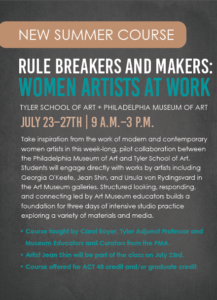
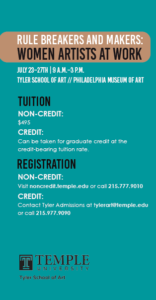
 D5 Creation
D5 Creation